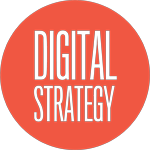On-Page SEO
A Guide to Higher Search Rankings
On-page SEO refers to the optimization of individual web pages in order to rank higher and earn more relevant traffic in search engines. It is a critical aspect of search engine optimization (SEO) and should not be ignored by any website owner who is looking to increase their visibility and attract more visitors to their site. In this article, we will discuss the key components of on-page SEO and provide tips for optimizing your web pages for search engines.
Key Components of On-Page SEO
There are several key components of on-page SEO that must be considered in order to improve your website’s ranking in search engine results pages (SERPs). Some of the most important components include:
- Title tags: Title tags are one of the most important on-page SEO elements. They provide a brief description of the content on a web page and are displayed in the SERP as the clickable headline for a given result. It is important to include keywords in your title tags, as this will help search engines understand the content on your page and determine its relevance to a particular search query.
- Meta descriptions: Meta descriptions are short summaries of your web page’s content that appear in the SERP under the title tag. They should be no longer than 155 characters and should accurately reflect the content on your page. In addition, it is important to include relevant keywords in your meta descriptions, as this can improve the click-through rate of your web page and increase its visibility in search results.
- Header tags: Header tags, also known as H tags, are used to structure the content on your web page and make it easier for search engines to understand. There are six different header tags (H1 to H6), with H1 being the most important and H6 being the least important. It is important to use header tags in a hierarchical manner and to include relevant keywords in your H1 and H2 tags, as this can help improve your website’s visibility in search results.
- Keyword usage: Keyword usage refers to the frequency and relevance of keywords in your web page’s content. It is important to research relevant keywords and to use them in a natural and strategic manner in your content. Overuse of keywords, also known as “keyword stuffing,” can result in a penalty from search engines and harm your website’s ranking.
- Image optimization: Image optimization refers to the process of optimizing images for search engines. This includes adding descriptive file names and alt tags to images, as well as compressing images to reduce their file size. Optimizing images can improve the loading speed of your web page and make it easier for search engines to understand the content on your page.
- Internal linking: Internal linking refers to the practice of linking to other pages on your website within your content. This helps search engines understand the structure of your website and the relationships between different pages. It also helps improve the user experience by making it easier for visitors to navigate your site.
Tips for Optimizing Your Web Pages for Search Engines
Now that you understand the key components of on-page SEO, here are 12 tips for optimizing your web pages for search engines:
- Create unique and relevant content: Content is king when it comes to SEO, and it is important to create unique and relevant content that provides value to your target audience. This will not only improve the user experience on your site, but it will also help you rank higher in search results.
- Use keyword-rich title tags and meta descriptions:
- Conduct keyword research to identify relevant and high-traffic keywords to target on your page.
- Optimize your page title by including your primary keyword, keeping it under 60 characters, and making it compelling and click-worthy.
- Craft a descriptive and informative meta description that includes your primary keyword and entices users to click through to your page.
- Ensure that your URL is clean, concise, and includes your primary keyword.
- Use heading tags (H1-H6) to structure your content and make it easy to read and understand for both users and search engines.
- Incorporate your primary keyword into your page’s content in a natural and meaningful way.
- Use internal linking to guide users and search engines to other relevant pages on your website.
- Optimize your images by compressing them, using descriptive file names and alt tags, and ensuring they’re properly sized for your page.
- Include social sharing buttons to encourage users to share your content on their social media channels.
- Ensure that your website is mobile-friendly and that your pages are optimized for mobile devices.
By following these tips, you can improve your website’s on-page SEO and increase your chances of ranking higher in SERPS (search engine results pages).
On-page SEO Best Practices
On-page SEO is a crucial aspect of optimizing your website for search engines. By properly optimizing your on-page elements, you can improve your website’s visibility and attract more organic traffic. Here are some best practices for on-page SEO:
Title tags and meta descriptions
Title tags and meta descriptions are two of the most important on-page SEO elements. Title tags appear in the search engine results and provide a brief description of the page’s content. Meta descriptions appear below the title tag and provide a summary of the page’s content. When writing title tags and meta descriptions, make sure to include relevant keywords and keep them under 60 characters.
Header tags
Header tags, also known as H1, H2, H3, and so on, help to structure the content on your page and make it easier for search engines to understand. Use H1 tags for the main heading and H2 tags for subheadings. Try to keep the number of H1 tags on a page to one and make sure that your main heading accurately describes the content of the page.
URL structure
URL structure is another important aspect of on-page SEO. Make sure that your URLs are short, concise, and contain relevant keywords. Avoid using numbers or special characters in your URLs and use hyphens instead of underscores to separate words.
Content
Content is the backbone of on-page SEO. Make sure that your content is high-quality, relevant, and unique. Use keywords in your content, but don’t overuse them. Google’s algorithms are designed to detect keyword stuffing and penalize websites that engage in this practice. Also, make sure that your content is well-structured, using header tags and bullet points to break up the text.
Internal linking
Internal linking is an effective way to improve the navigation of your website and increase the time that visitors spend on your site. By linking to other relevant pages on your website, you can provide your visitors with additional information and help search engines understand the structure of your website.
Image optimization
Images can greatly enhance the visual appeal of your website, but they can also slow down your page loading times. To optimize your images for on-page SEO, make sure to use descriptive file names, add alt tags to describe the images, and compress the images to reduce their file size.
Mobile Optimization
With more and more people using mobile devices to access the internet, it’s essential that your website is optimized for mobile devices. Make sure that your website is responsive, meaning that it adjusts its layout and content to fit the screen of the device that it’s being viewed on.
The Importance of On-page SEO
On-page SEO is important because it can help improve your website’s visibility and attract more organic traffic. By properly optimizing your on-page elements, you can improve your website’s ranking in the search engine results and make it easier for potential customers to find your website.
In addition, on-page SEO can also help to improve the user experience of your website. By using header tags to structure your content and internal linking to provide additional information, you can make it easier for visitors to find the information that they’re looking for.
Furthermore, on-page SEO can also help to improve the accessibility of your website. By optimizing your images and making your website mobile-friendly, you can ensure that your website can be accessed by as many people as possible, regardless of the device that they’re using.
In conclusion, on-page SEO is an essential aspect of optimizing your website for search engines. By following
the best practices outlined above, you can improve your website’s visibility, attract more organic traffic, and provide a better user experience for your visitors. Remember to focus on creating high-quality, relevant content, and to regularly monitor and update your

